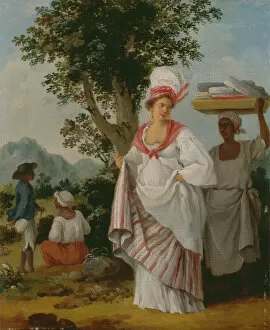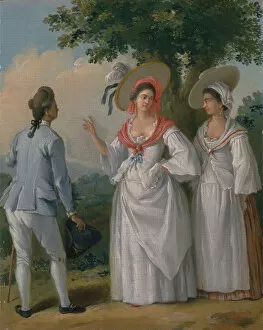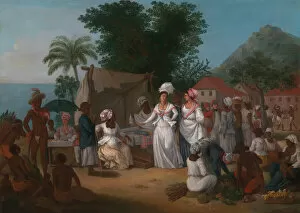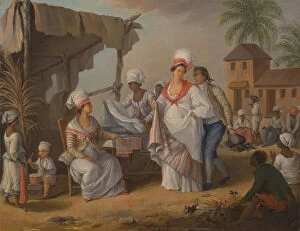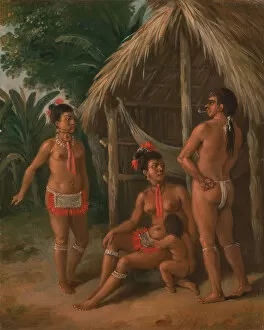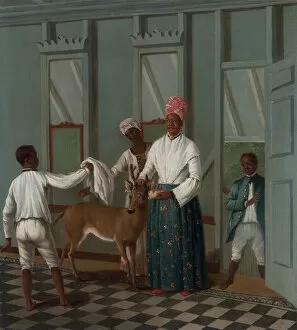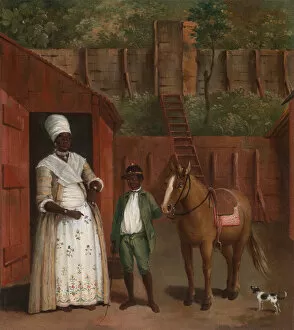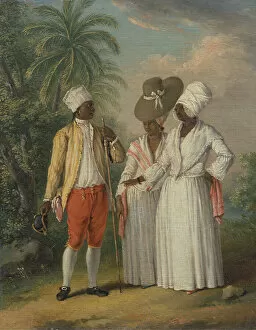Brunias Agostino Collection
Agostino Brunias, a renowned artist of the late 18th century, captured the essence of West Indian life through his captivating paintings
All Professionally Made to Order for Quick Shipping
Agostino Brunias, a renowned artist of the late 18th century, captured the essence of West Indian life through his captivating paintings. In "View on the River Roseau, Dominica, " painted around 1770-80, Brunias transports us to a serene riverside scene where nature's beauty intertwines with human existence. Moving forward in time, we encounter "West Indian Women of Color, with a Child and Black Servant" and "A West Indian Creole Woman Attended by her Black Servant, " both dating back to approximately 1780. These artworks shed light on the complex dynamics within society at that time – women from different backgrounds united by their shared experiences. Brunias also depicted the lives of free West Indian Creoles in elegant attire during this period. His painting titled "Free West Indian Creoles in Elegant Dress" showcases individuals who defied societal norms and embraced their unique identities. The artist didn't shy away from portraying power dynamics either. In works such as "Planter and his Wife, with a Servant" and "West Indian Man of Color Directing Two Carib Women with a Child, " he explores relationships between plantation owners or overseers and those they employed. Market scenes were another favorite subject for Brunias. Through pieces like "Linen Market, Dominica - A Market Scene" and "A Linen Market with a Linen-stall and Vegetable Seller in the West Indies, " he captures vibrant moments filled with bustling activity – vendors selling goods while locals engage in lively exchanges. In one particular artwork called "A Leeward Islands Carib family outside a Hut, " created around 1780, Brunias provides insight into indigenous communities' daily lives amidst colonial influence. This piece serves as an important reminder of their resilience despite challenging circumstances. Finally, two more intriguing paintings stand out.


